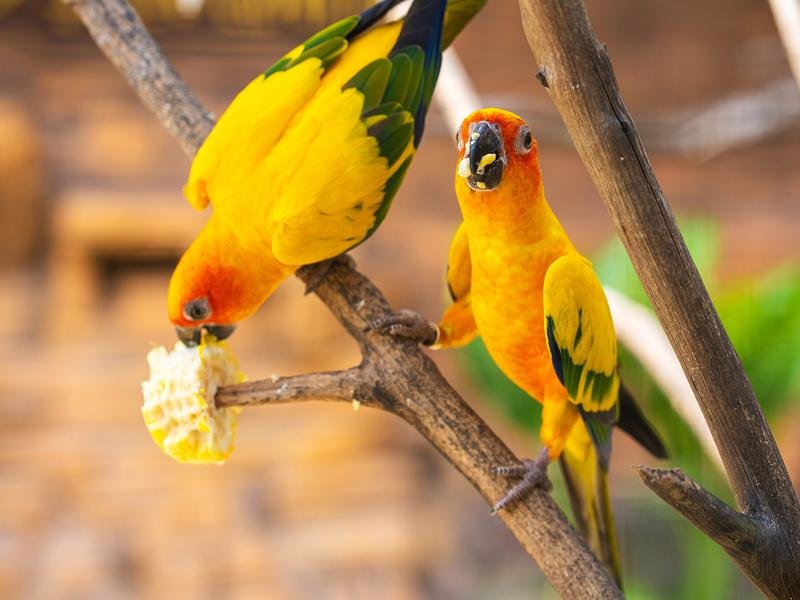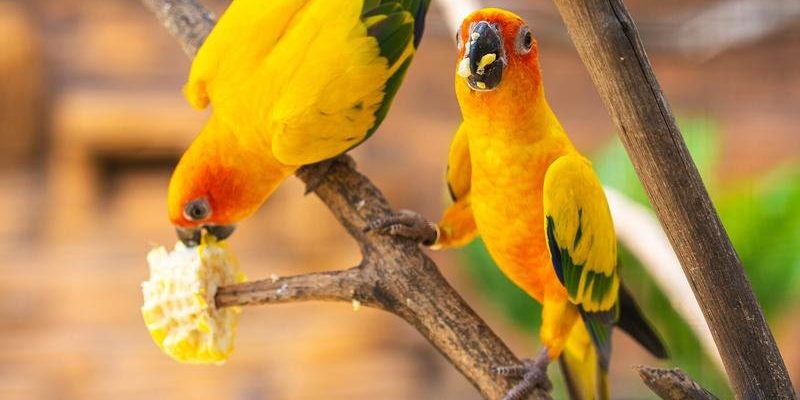
When you think about lovebirds, you might picture these colorful little creatures snuggling up together, chirping happily with each other. But what do these adorable feathered companions actually eat? Just like how we need a balanced diet to stay healthy, lovebirds also have specific dietary needs that are crucial for their well-being. Understanding their nutrition is key to ensuring they live a long, happy life. So, let’s dive in and explore what lovebirds eat and how you can provide them with the best diet possible.
Feeding your lovebird isn’t just about tossing some seeds in a bowl and calling it a day; it’s more like preparing a feast for a close friend. You have to consider their preferences and nutritional requirements. Lovebirds are known for being social and playful, just as you might enjoy trying out different foods and flavors. Here, I’ll guide you through all the essentials of lovebird nutrition—think of it as creating a gourmet menu for your feathered buddy!
The Basics of a Lovebird’s Diet
Lovebirds are primarily seed-eaters, but their diet shouldn’t consist of just seeds alone. This is a common misconception! A balanced diet for a lovebird includes a variety of foods to ensure they get all the vitamins and minerals they need. Think of it like mixing different colors to create a beautiful painting; each food contributes something unique to their health. For a well-rounded diet, you should focus on:
- Seeds: High-quality seed mixes designed for lovebirds are a great staple.
- Pellets: These can provide essential nutrients that seeds may lack.
- Fresh Fruits and Vegetables: These are vital for hydration and vitamins.
- Occasional Treats: Things like nuts or small amounts of cooked grains can be offered as treats.
Let’s break these down a bit more! The seed mix should ideally include a variety of seeds like millet, canary seed, and sunflower seeds, but avoid mixes that are primarily made of just one type. Pellets formulated specifically for lovebirds can complement their seed diet, offering balanced nutrition that seeds alone may not provide.
Seeds: The Staple of Their Diet
Seeds are like the bread and butter of a lovebird’s diet. They love munching on seeds not just for the taste but also for the fun of cracking them open. However, it’s essential to choose a high-quality seed mix. Often, lower-quality mixes contain fillers that provide little nutritional value. Look for organic and natural seed mixes without artificial additives. Adding fresh seeds can also ensure they stay fresh and crunchy; just like how you’d enjoy a fresh loaf of bread!
Some seeds, like sunflower seeds, are high in fat. While they can be a tasty treat, they shouldn’t make up more than 10% of your lovebird’s diet to prevent obesity. Balance is key! You might also want to consider sprouting seeds to increase their nutritional value. Sprouted seeds are easier for lovebirds to digest and can be packed with even more nutrients. It’s akin to how a sprouted plant is more nourishing than a regular seed.
Fruits and Vegetables: The Colorful Additions
Now, let’s talk about fruits and veggies—these are like the colorful side dishes you’d serve at dinner. Lovebirds enjoy a variety of fruits and vegetables, which provide essential vitamins and minerals. Some popular choices include:
- Dark leafy greens: Kale, spinach, and dandelion greens
- Fruits: Apples, berries, and bananas
- Vegetables: Carrots, bell peppers, and peas
When introducing new fruits or veggies, do it gradually. This ensures your lovebird adjusts well and doesn’t get an upset tummy. Just like humans might hesitate to try a brand-new dish, your lovebird might need some time to get used to these new flavors!
Supplements and Treats
Okay, so we’ve got the basics covered, but what about those little extras—like a dessert at the end of a meal? Offering occasional treats can keep your lovebird happy and engaged. Consider small bits of nuts or even a few seeds as a special reward. However, like any good treat, moderation is essential. Too many goodies can lead to obesity—trust me, no one likes a sluggish lovebird!
You might also consider providing calcium supplements, especially for breeding or laying females. Calcium helps strengthen bones and ensures overall health, much like how you’d take extra vitamins when you need that extra boost. It’s important to consult with your vet about the right kind of supplements for your feathered friend.
Hydration: The Unsung Hero
Don’t forget about water! Hydration is just as important as food. Your lovebirds need fresh, clean water available at all times. Many owners underestimate this, but just like we need a glass of water after a meal, lovebirds require it too. Change their water daily to keep it fresh—think of it like getting a new drink at a café!
You might also notice that some lovebirds enjoy bathing. Providing a small dish for them to splash around in can be incredibly beneficial for their feathers and skin. Just remember to keep it shallow and watch them for safety. A happy lovebird is often a clean lovebird!
Common Feeding Mistakes and How to Avoid Them
Feeding lovebirds can seem straightforward, but there are common mistakes many new pet owners make. Here are a few pitfalls to watch out for:
- Over-reliance on seeds: Make sure their diet is well-balanced with fruits and vegetables, not just seeds.
- Neglecting fresh food: Fresh produce should be a daily staple, not an afterthought.
- Ignoring water needs: Always check and replace their water; hydration is key!
Addressing these issues can help keep your feathered friend thriving. If you’re ever unsure about their diet or notice any changes in behavior, don’t hesitate to reach out to a vet who specializes in birds. They can provide tailored advice that fits your lovebird’s individual needs.
Final Thoughts on Lovebird Nutrition
Feeding your lovebird may seem overwhelming at first, but once you understand their dietary needs, it becomes a fun routine. Creating a balanced diet with seeds, fresh fruits, vegetables, and occasional treats is essential for their health and happiness. Just like you enjoy a varied menu each week, your lovebird will appreciate a colorful and nutritious diet.
As you embark on this feeding journey, remember to enjoy the process! Watching your lovebird enjoy its meals can be delightful. So, mix it up, keep it fresh, and let those lovebirds dine in style. Happy feeding!

